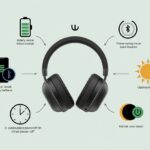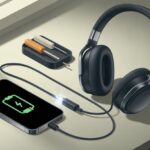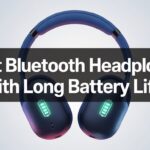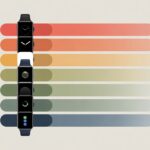Let’s be real: nothing kills the vibe faster than Bluetooth headphones sputtering out of juice right in the middle of your favorite track. If we want better battery life from our Bluetooth headset, the smartest move is to use them with a bit of care—keep the volume reasonable, turn them off when we’re done, and don’t roast them on the charger all day. It’s not complicated, but our headphones will appreciate it.
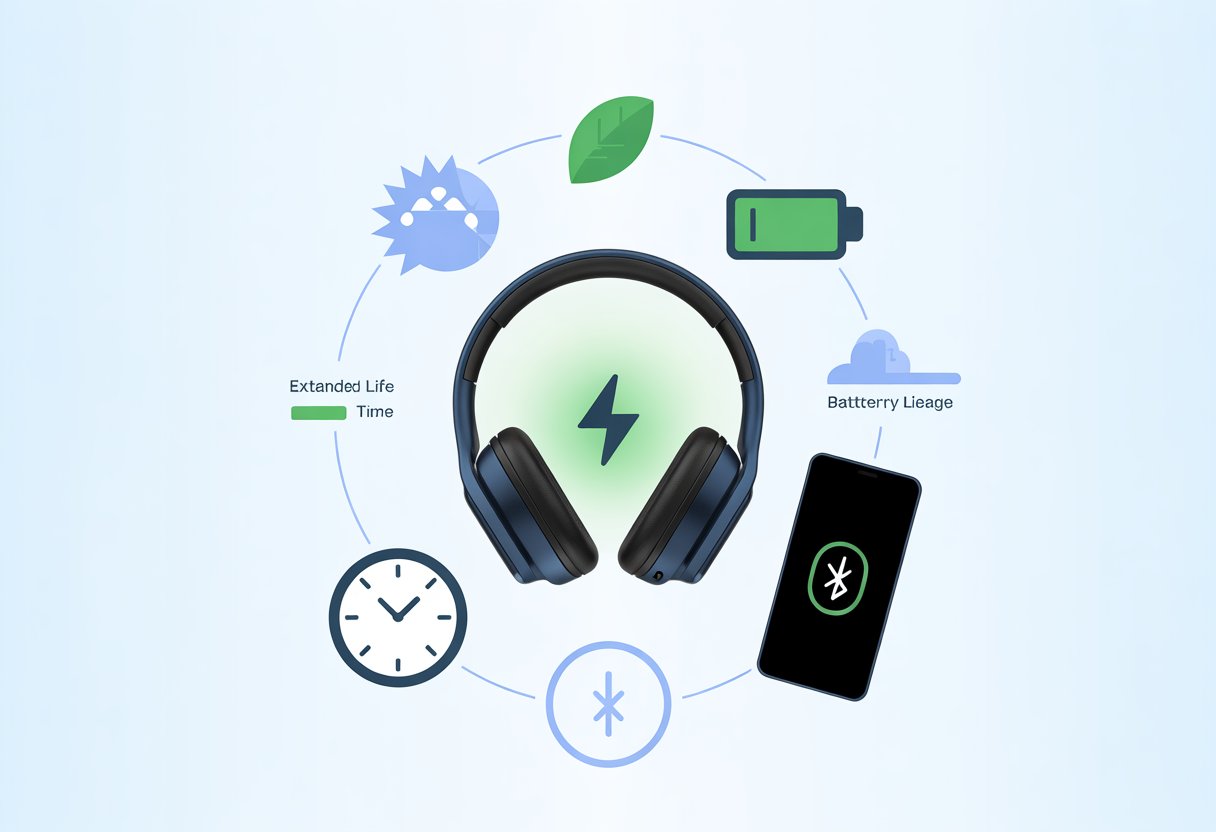
We don’t need to play tech wizard or buy a bunch of weird accessories. Just a few easy habits—like skipping overnight charging, not letting the battery hit zero, and giving our earbuds a rest—can keep them going longer.
If you’re after the full scoop on keeping your headphones alive (and honestly, who isn’t?), let’s dig into the tips that actually make a difference.
Why let an early battery warning ruin the fun when we could just dodge it altogether? Stick around, and let’s see how we can turn those headphones into battery champs.
Understand How Bluetooth Headphone Batteries Work
When we grab our Bluetooth headphones, we probably don’t think much about what’s powering our playlists. But if we know a bit about how these batteries work, we can keep the music going and skip those awkward silent moments.
Types of Batteries Used in Headphones
Most modern Bluetooth headphones rely on lithium-ion or lithium-polymer batteries. Thankfully, the days of carrying around spare AAAs are history.
Lithium batteries are small, light, and can fit into pretty much any headphone design manufacturers dream up.
Here’s a quick look at the usual suspects:
| Battery Type | Used in Headphones? | Pros | Cons |
|---|---|---|---|
| Lithium-ion | Yes | Long life, high capacity | Can degrade over time |
| Lithium-polymer | Yes | Flexible shape, lightweight | More expensive |
| Nickel-based | Rarely | Cheap, easy to recycle | Heavy, short life span |
Manufacturers use lithium batteries for slim designs and decent battery life. These batteries can handle hundreds of charges, but they slowly lose capacity as time goes on.
The Role of Lithium Battery Technology
Lithium batteries really are the stars of portable power. Why do we keep using them? They hold a ton of energy in a tiny space, so our headphones don’t feel like space helmets.
Lithium cells keep our headphones running for hours—sometimes all day—without needing a recharge. That’s because they’re super dense and efficient.
But even the best batteries don’t last forever. If we leave our headphones plugged in for days or let them bake in the sun, the battery will lose its spark faster.
We should try to keep them charged between 20% and 80% if we want them to last.
How Bluetooth Connectivity Impacts Power Usage
Bluetooth is what sets us free from wires, but it’s also one of the biggest battery drains. Our headphones burn power to keep that wireless link alive, and the harder they work, the faster the battery drops.
Turning on features like noise cancellation, voice controls, or using long-range Bluetooth eats up even more power. The newer Bluetooth versions—think 5.0 and up—are a bit thriftier, but streaming high-res audio or leaving Bluetooth on all day still drains the battery.
We can get more life by shutting off stuff we’re not using, or just turning off the headphones when we’re not listening. For more ideas, check out these smart ways to save battery.
Optimize Charging Habits for Longer Life
Charging smarter is the not-so-secret weapon for longer Bluetooth headphone battery life. We can keep our headphones going by dodging a few bad habits and using the right charging gear.
Avoid Overcharging Your Headphones
Let’s not treat our headphones like needy pets—they don’t need to be plugged in all night. Charging overnight can stress the battery after it hits 100%. That extra time on the charger keeps the battery topped up longer than it likes, which can hurt its health.
Some newer models stop charging automatically, but not all do. Unless your headphones brag about auto shut-off or battery protection, it’s best to unplug them once they’re full. Leaving them plugged in for hours isn’t doing them any favors.
If you can, just top them off when needed instead of plugging in every time you see an outlet.
Proper Charging Cycles and Battery Health
Our batteries—kind of like us after too much junk food—prefer moderation. Experts recommend not letting the charge drop below 20% all the time. Keeping the battery between 20% and 80% helps it last longer.
Partial charges are actually easier on lithium-ion batteries. Taking the battery from 100% to 0% or vice versa should be rare. Partial charges mean the battery works less, so we get more months of tunes.
You can get more details from this guide by Grepow.
Using the Right Charger for Your Model
We all love a bargain charger, but not every plug is a good match. Using the wrong charger—one that’s too strong or too weak—can damage the battery or even be a fire risk. Stick to the charger that came with your headphones or use one that meets the specs.
If your headphones didn’t come with a charger, check the manual or the product website. Charging in a cool, dry spot helps too, since heat is the battery’s worst enemy.
For more on smart charging and keeping your headphones cool, check out these practical headphone care tips.
Tweak Settings for Maximum Battery Efficiency
If we want our Bluetooth headphones to last as long as possible, a few quick tweaks can make a big difference. Messing with the right settings can mean the difference between all-day jams and your music cutting out mid-song.
Lower Headphone Volume
Honestly, we all love blasting our music sometimes. But our headphones aren’t built for that kind of marathon—louder volume drains the battery way faster.
If we keep the volume around 50-70%, the battery lasts longer and our ears don’t end up regretting it. Experts say this simple trick can add hours to your listening time, according to these battery-saving tips.
Lower volume still sounds great, and it’s easier on the battery. If you’re in a quiet spot, there’s really no reason to crank it up. Our ears and battery both win.
Disable Unnecessary Features
Modern Bluetooth headphones are packed with features—some we barely use. Things like smart sensors, always-on voice assistants, flashing LEDs, and fancy EQ settings all nibble away at the battery.
Do we really need an LED blinking all day? Or a voice assistant waiting for commands we never give? Turning off extras we don’t use keeps the battery working for us, not against us.
Some apps also keep connections open or sync data, and that can drain power quietly. The more stuff we turn off, the longer the battery lasts.
You can find more settings advice if you want to dig deeper.
Adjust Bluetooth Transmit Power
Bluetooth is handy, but it’s not magic—the farther the signal reaches, the more juice it needs. Some headphones and phones let us adjust Bluetooth transmit power, usually called “power saving” or “range mode.”
If we don’t need to wander far from our phone, lowering transmit power can help the battery last longer. Keep your device nearby and check for “reduced power” or “short-range” settings in the app.
Less power means a more efficient connection and less battery drain. It’s like asking Bluetooth to take it easy instead of running a marathon—save the energy for when we really need it.
Maintain Your Bluetooth Headphones Like a Pro
Bluetooth headphones need a little more love than we sometimes give them. If we want to stretch out the battery life and keep the music going, it takes more than just charging every now and then.
Keep Firmware Updated
Let’s be honest—most of us skip firmware updates if we can. But manufacturers roll out updates to squash bugs and improve battery performance.
We don’t need to be tech experts; just connect the headphones, open the brand’s app, and tap “update” when it pops up.
If we ignore updates, the battery might drain faster, or we could miss out on new features that help save energy. Some updates even fix idle battery drain and connection issues.
Staying up to date is one of the easiest ways to keep your headphones running better—no tools required.
Regularly Clean the Headphones
Let’s face it, headphones get gross. Dirt, sweat, and earwax aren’t just unpleasant—they can block sensors and charging ports, making the battery work harder.
A clogged port or sensor can mean slower charging or random disconnects. Here’s what helps:
- Use a soft cloth or a little brush for ear tips and crevices.
- Clear debris from charging contacts with a dry cotton swab—skip the liquids!
- Clean them once a week if you use them daily.
Quick cleaning keeps everything working and helps the battery out. Plus, our ears will appreciate it.
Store Headphones in Moderate Temperatures
Bluetooth headphones are a bit picky about their environment. If we leave them in a hot car or a freezing backpack, the battery suffers.
Extreme temperatures mess with battery life—heat speeds up wear, and cold slows things down.
Here’s a quick checklist:
- Do: Store at room temperature, away from sunlight.
- Don’t: Leave them in the car during summer or winter.
- Do: Use the original case—it protects against temperature swings.
Storing headphones right is simple, but it really helps the battery last. For more on keeping your headphones in top shape, check out SoundGuys on headphone maintenance.
Troubleshooting Common Causes of Short Battery Life
Bluetooth headset battery life can feel way too short, especially when we need it most. Sometimes, just checking for battery-hungry apps, stopping broken connections, or doing a quick reset can save us from charging headaches.
Identify Battery-Draining Apps
Honestly, it’s not always the headphones’ fault—our phones often cause trouble. Some apps run in the background like little battery thieves, especially ones that use Bluetooth or send nonstop notifications (yeah, social media, we see you).
We can check our phone’s battery settings to spot which apps are hogging power. Turning off background activity for less important apps helps our headset last longer. If that’s not enough, try putting extra apps to sleep or just delete the ones we never use. If you’re curious, here are more Bluetooth earphone battery hacks.
Detect and Prevent Connection Drops
Connection drops are sneaky. Every time our Bluetooth headset reconnects, it burns more battery.
Devices disconnect if we wander too far, get interference from other gadgets, or have too many devices paired at once. To avoid this, stick within the recommended range—usually about 30 feet—and keep gear away from microwaves or Wi-Fi routers.
Pair with only one device at a time to keep things simple. We should also check for firmware updates, since those sometimes fix random disconnects. Turning off Bluetooth on old paired devices can keep the connection strong and save battery. For more help, try this article on tackling shorter battery life in Bluetooth earbuds.
Reset Your Product for a Fresh Start
If nothing else works, maybe it’s time to reset the headset. When battery levels jump up and down for no reason, you’re probably dealing with a software bug or calibration issue.
Usually, you can reset by holding the power button for a few seconds (or check the manual for the secret combo). A reset clears out old connections and weird settings, giving your headphones a clean slate. Charging up to 100% after a reset helps the battery recalibrate. You can read more about this in the Quora thread: Why does my wireless Bluetooth headphone battery indicator keep fluctuating?.
When to Consider Replacing Your Headphone Battery
Bluetooth headphones don’t last forever, even if we wish they did. When the battery finally gives up, our playlists go quiet. Sometimes, we just need to swap out that little lithium battery before it leaves us stranded.
Signs Your Battery Is on Its Last Legs
Headphones can get cranky, almost like a toddler refusing bedtime. If the battery barely lasts a couple hours—or less—it’s signaling surrender.
If we once got 20 hours but now only see half that, it’s time to pay attention. Other red flags are sudden shutdowns, battery percentages bouncing all over, or the headphones refusing to turn on. Charging suddenly takes forever, or the headphones get hot during a simple charge. Those are classic signs the battery’s at the end of its rope.
Usually, headphones start showing these battery tantrums after one to three years, depending on how much we use them and how we treat the battery. Modern batteries hate being run down to zero every time. If we’ve been ignoring those low battery warnings, we’re just speeding up battery aging. There’s more advice and real stories in this discussion about declining battery life.
Finding the Right Replacement
If we’re feeling bold enough to try a DIY fix, we’ll need the right replacement battery. Most headphones use a lithium battery—sounds fancy, but it’s pretty standard. The battery has to fit the case and match the voltage and capacity. Nobody wants a battery bulge sticking out like a sore thumb.
Brands like Growpow (yep, that’s the name) sell replacement lithium batteries for gadgets. Always double-check the model and specs before buying. Trying to squeeze in a bigger battery usually fails and can break the headphones. Some companies like Sony and Bose offer original replacements, but third-party ones can work fine too.
Let’s check return policies and seller ratings, especially if we’re buying from far away. Here’s a guide to choosing battery replacements.
Getting Professional Help
We’d all love to think we have steady hands for tiny repairs, but headphone batteries aren’t always easy to replace. Many headphones hide their batteries behind tiny screws, glue, or delicate wires.
If you’re not confident, a local repair shop might be a safer bet. Pros are less likely to turn your $300 headphones into a jigsaw puzzle. Ask about parts and labor costs first—nobody likes surprise bills.
If your headphones are under warranty, don’t touch a thing. Check if the company will replace the battery or send a new unit. When in doubt, professional help saves time and frustration.
Extend Operating Time During Daily Use
We all want to squeeze every minute out of our Bluetooth headphones. Battery life can make or break a good day, so a few easy habits can help us go longer between charges.
Keep Headphones Offline When Not in Use
When we’re not listening, our Bluetooth headphones are still sipping power in the background. It’s a little sneaky, honestly. The best fix? Turn them off completely or disconnect from Bluetooth when we’re not using them.
Shutting off headphones is usually as simple as holding the power button. Some models turn off by themselves after a while (thank you, smart designers!). If not, let’s just remember to power them down ourselves. This habit cuts down wasted power and stretches out operating time.
For extra efficiency, keep headphones in their case when not in use—the case often doubles as a charger or power saver. According to some helpful advice, turning off Bluetooth when we’re done is one of the easiest ways to boost battery life.
Use Low Power Bluetooth Protocols
Bluetooth can be sneaky. There are all these different protocols, and honestly, not every one of them is gentle on your battery.
The classic version? It drains power fast. But Bluetooth Low Energy (BLE) is much more forgiving if you care about battery life.
If your headphones and devices support BLE, try to use it. BLE handles short bursts of data instead of constant streaming.
It’s not ideal for high-quality music, but it’s great for calls or notifications. That’s a fair trade-off for some folks.
A lot of headphones have a “power saving mode” or let you turn off things like always-on voice assistants or those blinking LEDs.
When you run less hardware, you use less energy. You might have to dig through the settings—or yeah, actually read the manual—but cutting out extra features gives you more listening time.
Here’s another tip: active noise cancellation and those fancy audio effects? They chew through battery too.
If you don’t need them, just switch them off. This guide on maximizing your wireless headset battery life backs that up.
- Why do my Bluetooth headphones keep resetting? Solving the Mystery of Rebooting Ears - January 5, 2026
- Is WHOOP Worth It for Runners, Cyclists, and Weightlifters or Just Another Expensive Wrist Buddy? - January 5, 2026
- Best Fitness Trackers Under $200 That Won’t Make Your Wallet Sweat - January 4, 2026

